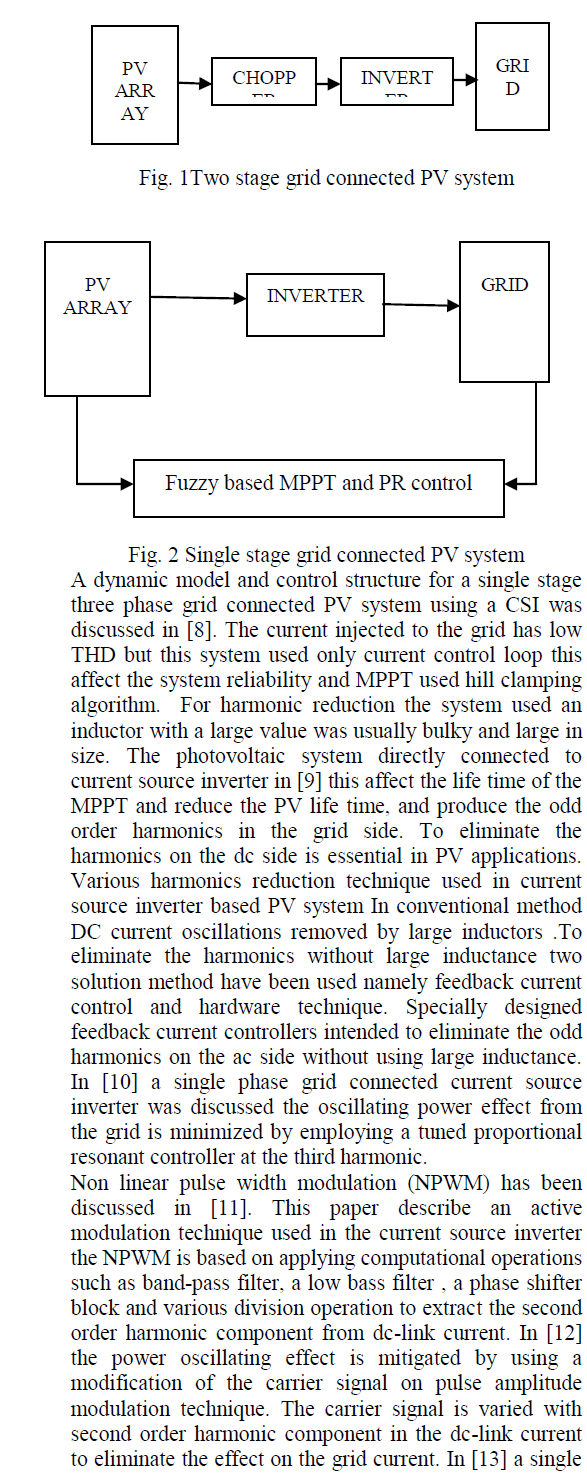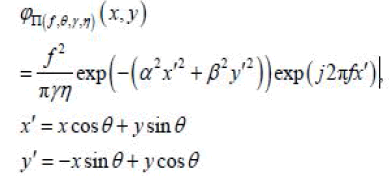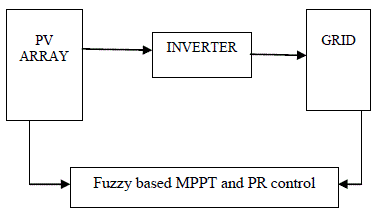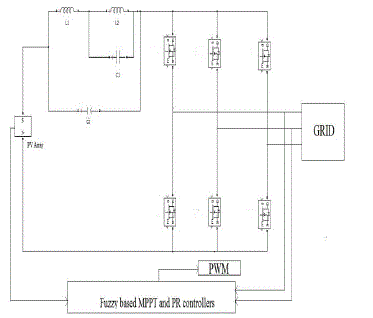ISSN ONLINE(2319-8753)PRINT(2347-6710)
ISSN ONLINE(2319-8753)PRINT(2347-6710)
Chaitali Deshmukh, Prof. S.D.Jondhale
|
| Related article at Pubmed, Scholar Google |
Visit for more related articles at International Journal of Innovative Research in Science, Engineering and Technology
There are many social networking web sites used by people and every day numbers of photos are uploaded by them on it. But from a photo we cannot predict the relationship among the people in photo. So there is a need for automatically identifying and predicting relationship, specifically kinship from photo. Proposed system comes under Computer Vision and is based on Face recognition, Feature extraction and knowledge transfer learning. System first detects all the faces from given photo then extracts the features from the faces using Gabor wavelet transform. A UB KinFace version 2.o database is used to train the system giving extracted features as a matrix that is compared with extracted features from photo, which ultimately results to the classification of whether kinship or not.
Keywords |
| Feature extraction, face recognition, knowledge transfer learning, wavelet transform. |
INTRODUCTION |
| For kinship verification the analogy of Bloodhound is used. Meaning of Bloodhound is Special type of Dogs used for tracking by the sense of smell. Similarly for kinship tracking Facial features are identified, extracted and used for verification. It comes under pattern recognition and computer vision. In last two decades large work is done on face detection and recognition. But comparatively kinship verification is less explored, there are very few attempt to solve this problem, one of the reason is less availability of dataset. Generally people recognize kin relation by comparing facial features like nose, eyes, mouth etc. Kinship verification is a challenging task as some of the features of a child may resemble the features of either His/her mother or father or both and identifying that matching features, then to predict parent child relation is complicated. Today is the era of Digitalization. People don’t depend only on digital camera, but they Capture a photo through mobile phones, or any other electronic devices. To capture image using smart phones and to share them immediately on social networking site like Facebook is very common. A study [5] says that More than 250 billion photos have been uploaded to Facebook on an average each day, more than 350 million photos are uploaded. But question arises [1] 1) who this people are? 2) And what is their relation? Is there any kinship between people in images? For that we have to recognize all the faces in photo and then find out the relation between them. |
| Other than social networking sites, Kinship verification can also be used to build a family tree from a photo album, for finding missing children or child adoption. There are number of algorithms available for face detection and recognition. But we are interested to make a framework which will either use these algorithms to improve a result or any other novel framework. Commonly used algorithm [10] for face detection are Haar features are very simple and effective for frontal face detection, for learning if features are prespecified then boosting learning is useful. On other hand convolution neural networks and SVM also performs well.Now a day’s Face detectors are present in digital camera and mobile phones. The recent face detectors are a typically appearance-based method, which means that they need training data to learn the classifiers. Another way for face recognition is to use context based objects, where other body part and other human related features can be used. Tagging is the concept related to face recognition is widely used on social networking sites but its scope is limited as it just recognize the previously tagged (manually given identity to face in image) faces. |
LITERATURE SURVEY |
| A. K-Nearest- Neighbors |
| first attempt of kinship verification is done by [2], they have evaluated a set of low-level (local) image features for parent child classification. They created Parent-child database from Internet which consist of 150 images with variations in gender, race age etc. They recognized 22 main features like skin-color, eye-distance, eye to nose-distance, and global feature like HoG magnitude etc, from face image using simplified pictorial structures model then computed important 6 features and combined them into a 10 dimensional feature vector. Two machine learning methods: K Nearest- Neighbors with K = 11 and Euclidean distance, and Support Vector Machine with a radial basis function (RBF) kernel and the LibSVM package are used. This ultimately gives pairs of face images are related or unrelated. |
| Pros: As it was first attempt for kinship classification, it has given new direction for research. |
| Cons: Even though it gives 70 % accuracy on test set, images used for training is very less i. e. only 150 pairs. |
| B. sparse representation-based classification (SRC) |
| Query person [3] is reconstructed and it suggests whether the query person belongs to a family. This is done using scarcity. Query person is reconstructed by facial parts of family members. Dictionary, which contains large number of parts of family faces is used. Face recognition is based on sparse representation-based classification (SRC) approach.”Family 101” dataset with 206 nuclear families, and their family tree with large number of individual images is used. Pros: if number of people in same family is increases, then faster it increases the accuracy. Cons: There should be more number of people in family for training samples and as it improves the result only if number of people in same family is increases, as children may inherits the feature from more than one person in family apart from their parents |
| C. Transfer subspace learning |
| Siyu Xia & Ming Shao published two papers on kinship verification based on Transfer subspace learning [1] [4]. Their first paper [4] was based on transfer learning. They prepared KinFace version 1.odataset for that. After their attention is shifted to face recognition with context [1]. Previous attempt was face recognition without context. The information like location of photo, time when the photo is captured, patterns of reoccurrence and co-occurrence, clothing, position of a person in photo or any other text or link information gives contextual information. As both papers based on transfer subspace learning, UB KinFacedatabase contain child image, young parent image and old parent image i.e. Same parent images with their different ages. It show that comparing children image with young parent gives better result than with old parent , as using young parent image reduces the semantic gap. For feature extraction face is divided in to five different layers and then Gabor filters are applied. For latter paper[1] database is modified as Ub KinFace Ver. 2.0. Pros: It has considered contextual information also with subspace learning and improved the results. |
| Cons: size of training dataset is large as it included young parent images with of same person with old parent image and children’s image. |
| D. Self Similarity Representation of Weber Faces |
| SSRW algorithm (Self Similarity Representation of Weber Faces) [4] contains four major steps. Adaboost face detector is used for face detection, then preprocessing is done by Webbers Normalization. Difference of Gaussian (DoG) extracts the key points. Self Similarity Descriptor is used to find the similarity. And its output is given to the SVM classifier. This algorithm gives better results i.e. 75% on the database which is prepared by them consisting of 272 kin pairs compare to UB Kinship Database with 55% accuracy. |
| Pros & Cons: Self Similarity Descriptor (SSD) computes similarity which is invariant to translation, rotation, and scaling but gives only 55 % accuracy on UB kinship database. |
IMPLEMNTAION DETAILS |
| Proposed system implements the algorithm that has not been used for kin verification till date. Fig.1.Show the block diagram of the system with two input images one will be the family photo and other is the query image, and our target is to identify Is there any kin relation between query image and persons in photo. Proposed system is divided in following models: |
| Face Detection |
| Feature Extraction |
| Machine learning / transfer learning algorithm with classifier |
 |
| E. Face Detection |
| Method proposed in [11] is used for face detection, this method consist of three steps |
| Integral Image representation |
| Adaboost based learning algorithm |
| combining increasingly more complex classifiers in a “cascade” |
| By performing operations on pixels [11], we will get integral image. Then Haar like features computed on that. To train the classifier and feature selection Adaboost is used. Background images to be rejected from image and should concentrate only on face. So we require cascading of filters with increasing complexity. |
| F. Gabor Wavelet Transform |
| Gabor filter and wavelet transformation can be applied to extract important features. Feature extracted by Gabor filters have large dimensionality, wavelet transformation reduces this dimensionality. And discriminative common vectors can be obtained [8]. 2D Gabor filter is Gaussian kernel in spatial domain and its modulated function by sinusoidal plane wave is. |
 |
| where f is sinusoidal Plane wave’s central frequency, θ is the anti-clockwise rotation of the plane wave and Gaussian, α is the sharpness of the Gaussian along the major axis parallel to the wave, and β is the sharpness of the Gaussian minor axis perpendicular to the wave η = f / β and γ= f / α are defined to keep the ratio between sharpness and frequency constant. A set of Gabor filters with different frequencies and orientations are required to extract features from a face image. Gabor wavelet transform can represented an image with spatial relations and the spatial frequency structure. Normally 40 filters with 8 orientations and 5 scales are used. Generally application to application number of filters to be used varies. Image features can be extracted by convolving the input image with Gabor filter. |
| G. Wavelet Transformation |
| A series of filter bank stages is used to build a wavelet transformation. It is capable of capturing significant facial feature and results in strong representation with regard to lighting changes. The filter output are down sampled by the factor of two. After word every signal is filtered by identical filter in vertical direction. Every image is decomposed in four sub bands. Decomposition of sub band is denoted by HH, LH, LL, and HL. |
| H. Machine Learning / knowledge transfer learning |
| To train a dataset, knowledge transfer learning is required. In this one can reuse the knowledge learned from previous study. Transfer learning is basically of two types [1][9], inductive transfer learning in which learning targets are always different and Transductive transfer learning where learning targets are quite identical. A pair of image, containing parent - child is given for transfer learning. For better results machine should be train with positive (kinship exist) and negative training samples. Again there will be of two categories in both types of training samples. Fig.2. shows the example of training data set |
 |
| Fig. 2shows several examples of training dataset. (a) similar looking kin, (b) different looking non-kin, (c) different looking kin (father-son), and (d) similar looking nonkin. |
| I. Neighborhood Repulsed Metric Learning |
| Authors of [9] have proposed two algorithms for Metric Learning, NRML (Neighborhood Repulsed Metric Learning) and MNRML (Multiview MNRML). We can use that as a Machine learning algorithm. Our approach falls in Transductive transfer learning. Fig.2. D. shows that there can be similar looking nonkins(interclass samples) and also fig. 2. C different looking kin. This easily causes the misclassification in calculating similarity metrics. Samples with higher similarity lie in Neighborhood. NRML tries to learn distance metrics such that, intraclass samples (with kinship relation) are pushed as near as possible, while interclass samples are repulsed and are pulled as far as possible, who lying in Neighborhood at the same time. |
| Algorithm 1: Neighborhood Repulsed Metric Learning (NRML) |
| Input: Training images from dataset: |
| S = {(xi, yi)|i = 1, 2, ……….,N}, Parameters: k neighborhood size, T iteration number, and Convergence error ÃŽÃÂ. Output: W as Distance metric. |
| Step 1 (Initialization): |
| By using the conventional Euclidean metric Search the kNN for each xi and yi |
| Step 2 (Local optimization): |
| For r = 1, 2, · · · , T , repeat |
| 2.1. calculate H1, H2 and H3, respectively. |
| 2.2. Solve the eigenvalue problem given in Eq. (1). |
| 2.3. Obtain Wr = [w1,w2, …….. ,wl]. |
| 2.4. Update kNN of xi and yi by W r. |
| 2.5. If r > 2 and |W r −W r-1| < ÃŽÃÂ, go to Step 3. |
| Step 3 (Output distance metric): |
| Output distance metric W = W r. |
| By solving following Eigenvalue problem W can be obtained. |
| (H1+H2-H3)w = λw eq. (1) |
| J. Dataset |
| The database to be used is, named “UB KinFaceVersion 2.0” [1], it is an extension of “UB KinFace Version1.0”.It have instances and ethnicity group impacts. It have large range of variation in facial images , including pose, expression, age, lighting, gender, race, color saturation, background, and image quality, etc. Database contain Children and his parents both young age and old age photo. It have total 600 images of 400 people, collected from internet. Database can be divided into two parts Asian and non Asian. There are four kin relation “mother-daughter” with 9%, “father- daughter” with 38.5%, “mother- son” with 6%, “father- son” with 46.5%. |
 |
| Fig. 3 Illustration of kinface database. Four possible relationship corresponding to groups of people. Male parents are in blue eclips, Female parents are in Green eclips and chlidren are in red eclips(in onlive version) Dataset contains only true pairs, but for training we require true as well as false pairs of kinship. For false pairs randomly any image from child is selected and any parent image who is not actual parent is selected. |
CONCLUSION AND FUTURE SCOPE |
| Proposed system for kinship verification based on Gabor Wavelet filter which extracts important features from image and wavelet transform reduces its dimensionality, database “UB KinFaceVersion2.0” given as training database to NRML which learns a distance metric simultaneously under the condition that facial images with kinship are brought as close as possible while others are pulled as far as possible. This will improve the results for kinship verification. This can be further extended with finding kin relation with contextual information. Tags can be used for getting extra information like friends, collogue, relatives and can improve the results for kin verification. Also if location of image is same then that can also add extra information for improving results. |
References |
|